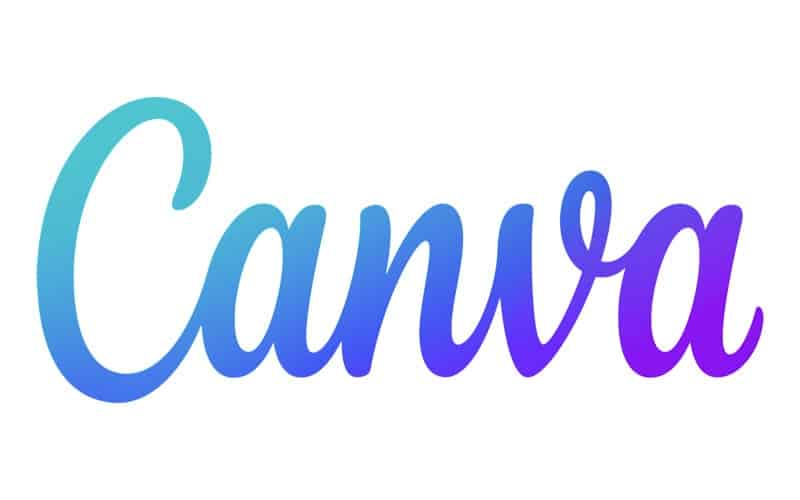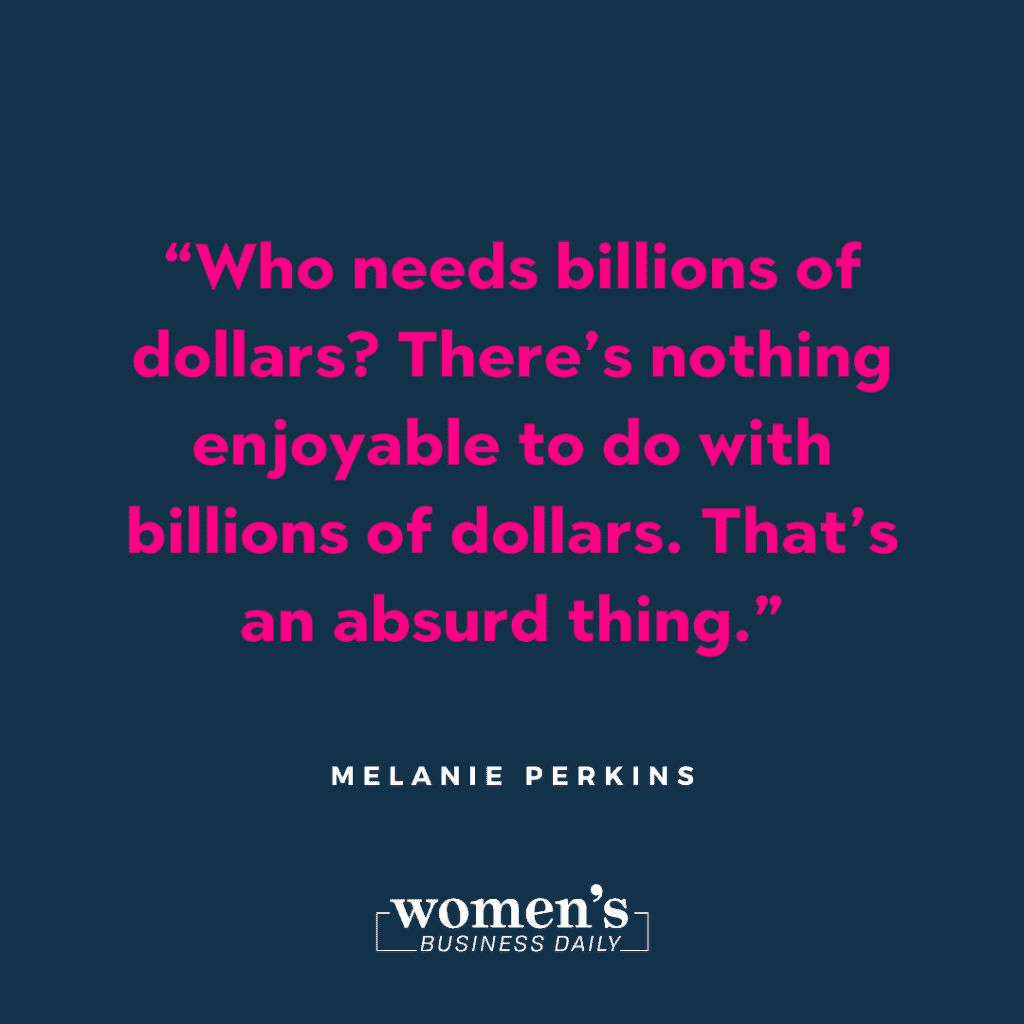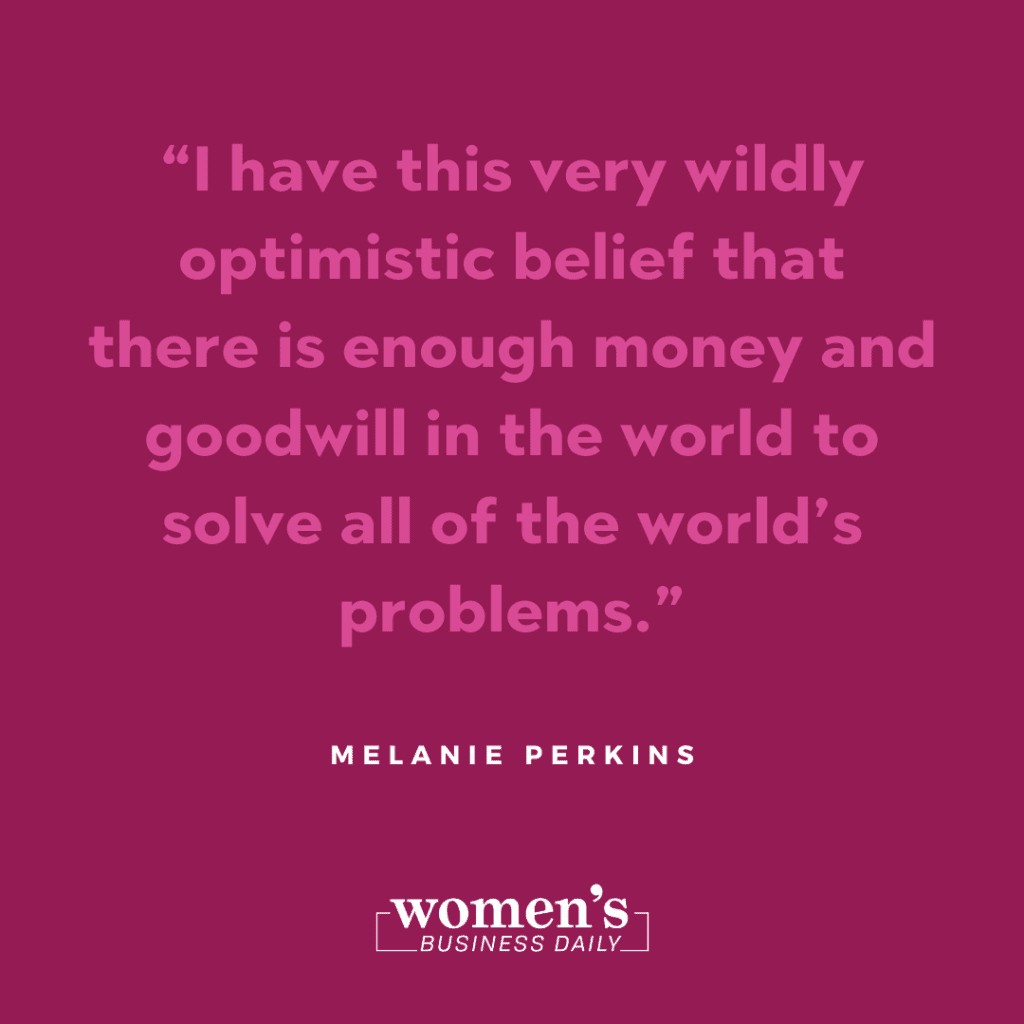From individual creators to mega-corporations, practically everyone knows about Canva. And that’s exactly why Melanie Perkins created the graphic design platform. She wanted to democratize design. She envisioned a site where people with no design experience whatsoever could create content. Even though she faced rejection after rejection when it came to funding, she never gave up on her dream.
Let’s talk about Melanie Perkins, the incredible mind behind the platform shaking up the design software industry and one of the richest women in Australia.
Melanie Perkins: Early Days and Entrepreneurial Beginnings
Perkins grew up with the drive all entrepreneurs need to succeed. She was born in Perth, Western Australia to an Australian teacher and a Malaysian engineer with Filipino and Sri Lanka heritage. She started her first small business at 14, selling her handmade scarves at local shops and markets. Perkins credits this early experience with giving her the drive she needed to succeed as an entrepreneur later on. In high school, she wanted to pursue the art of professional figure skating, so she woke up at 4:30am to train. These two examples illustrate her drive to shoot for the moon and put in the long hours required to get there.
Perkins began attending the University of Western Australia to pursue a degree in Communications, Psychology, and Commerce. While at school, she made money on the side by tutoring design students. She watched as students struggled to master just the basic functions of Adobe design programs after a whole semester of dedicated tutoring. And she thought there had to be a simpler solution.
Perkins came up with the idea for Fusion Books, the forerunner to Canva. It was a school yearbook business that made it easier for designers to create beautiful yearbooks. Her then-boyfriend, now husband Cliff Obrecht worked on the project with her from her mother’s living room. They started the company with just a bank loan and a tax rebate of $5,000. The pair spent the startup capital on online advertising and sending out sample yearbooks. She dropped out of school at 19 to fully dedicate herself to the startup. Over the course of 5 years, Fusion Books became the largest yearbook company in all of Australia and expanded out to France and New Zealand as well.
Perkins decided she wanted to take the idea of Fusion Books and apply it to design everywhere.

Melanie Perkins: Getting Canva Off the Ground
Perkins dreamed of creating a site that could empower people of all skill levels to design beautiful content. After watching students struggle with the complexity and high cost of Adobe, she wanted to make the design process accessible.
Not everyone saw the potential in her idea. When she hit the ground running to find investors, she heard the word “no” over 100 times during her pitch. She thinks that when she approached US investors, they hesitated to support an unknown entrepreneur from Australia. Investing in her seemed like too much of a risk.
After three years filled with uninterested investors, Perkins and Obrecht met investor Bill Tai. Even though he didn’t invest, he connected her with people that would help get Canva off the ground. He told them that they needed to stop everything and wait until they had the technical team required to build something this sophisticated. He connected them with Cameron Adams, an ex-Google employee in Silicon Valley trying to begin his own company. And he became the third founder and chief product officer for Canva.
She finally started getting yeses. They secured $1.5 million in funding for Canva with co-founder of Google Maps Lars Rasumussen as one of her investors.
In 2013, Perkins and Obrecht purchased the URL Canva.com for $2,500. By 2014, they moved to Sydney in order to further the business.

Melanie Perkins: Canva’s Success
Melanie Perkins acts as Canva’s CEO and Cliff Obrecht fills the role of COO. The married couple has watched their success blossom through the company they built together.
Canva has 75 million active users every single month. On average, those creators make 150 designs every second. The company expects that by the end of 2022, they’ll have exceeded $1 billion in their yearly revenue.
Canva owes its success to the bottom-up strategy they implemented. The most common way they pull customers in is by making the platform accessible and free to users at home. Once those personal users fall in love with the program, they’ll bring it into the office. That business can use it to create beautiful content, and the interface makes the program so easy to share projects with coworkers. The company will then feel the need to upgrade to an Enterprise account. Once it becomes the standard design tool within the office, people who were previously unfamiliar with it will bring it home to use in their personal lives and the cycle continues.
Everyone from a side hustler to independent artists to small businesses to mega-corporations can use Canva. Some of the major companies using Canva professionally include Marriott, Live Nation, Salesforce, Warner Music Group, and PayPal.
While Canva cannot replace a professional graphic designer, it makes it easy, quick, and affordable to make social posts, business cards, presentations, and so much more. For things like logos, art pieces, and detailed designs, companies then have a bigger budget to invest in higher quality designers, since they don’t need a designer for every small project.
Canva doesn’t just make design easy. They also have written into their user agreement that no one can use this platform to create hateful content. In section 3.2 of their fine print clause, it says, “Canva does not support and will not tolerate its Service being used to discriminate against others, especially when based on race, religion, sex, sexual orientation, age, disability, ancestry or national origin.” They reserve the right to suspend or terminate any account they feel violates these principles without explanation.

Melanie Perkins: Leaving a Legacy
Canva has made Melanie Perkins the second wealthiest woman in Australia at only 34. She’s one of the youngest females to ever run a $1 billion tech company. Canva recently sold for a $40 billion valuation. With Melanie and Cliff’s 30% stake in the company, that means their stake is worth $12 billion.
But Perkins didn’t create Canva to become one of those venture capitalists that hoard their wealth. When asked about her wealth, Perkins said “Who needs billions of dollars? There’s nothing enjoyable to do with billions of dollars. That’s an absurd thing.”
So Perkins and Obrecht decided to donate 97% of their stake to the Canva Foundation; they still maintain their voting rights in the company. They have yet to give details on how the charity will operate, but they aim to play a role in ending poverty.
“I have this very wildly optimistic belief that there is enough money and goodwill in the world to solve all of the world’s problems,” Perkins said.
We can’t wait to see what good the organization, Canva cofounder Melanie Perkins, and partner Cliff Obrecht do in the future.
Author, Artist, Photographer.
Sarah Margaret is an artist who expresses her love for feminism, equality, and justice through a variety of mediums: photography, filmmaking, poetry, illustration, song, acting, and of course, writing.
She owns Still Poetry Photography, a company that showcases her passion for capturing poetic moments in time. Instead of poetry in motion, she captures visual poetry in fractions of a second, making cherished keepsakes of unforgettable moments.
She is the artist behind the Still Poetry Etsy shop, which houses her illustrations and bespoke, handmade items. She is the author of intricacies are just cracks in the wall, a narrative poetry anthology that follows a young woman discovering herself as she emerges from an abusive relationship.
- Sarah Margaret Henryhttps://www.womensbusinessdaily.com/author/sarah-margaret-henry/
- Sarah Margaret Henryhttps://www.womensbusinessdaily.com/author/sarah-margaret-henry/
- Sarah Margaret Henryhttps://www.womensbusinessdaily.com/author/sarah-margaret-henry/
- Sarah Margaret Henryhttps://www.womensbusinessdaily.com/author/sarah-margaret-henry/






